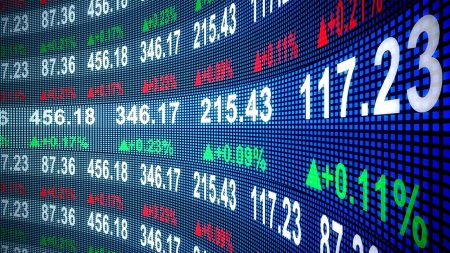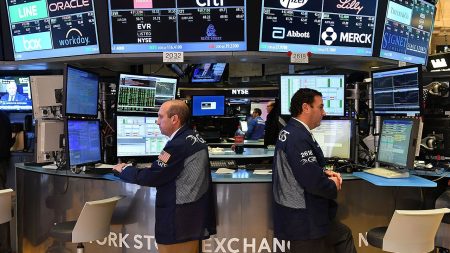Our writers and editors used an in-house natural language generation platform to assist with portions of this article, allowing them to focus on adding information that is uniquely helpful. The article was reviewed, fact-checked and edited by our editorial staff prior to publication.
Thematic ETFs have been gaining popularity among investors in recent years, offering targeted exposure to specific market trends or sectors.
These specialized funds can provide higher potential returns, but also come with greater risk and volatility.
Before jumping in, it’s important to understand the unique characteristics and risk factors of these funds. In this article, we’ll explore what thematic ETFs are, the different types and key considerations for investors.
Here’s what you need to know.
What is a thematic ETF?
A thematic ETF, or exchange-traded fund, is an investment fund that targets a specific theme or trend within the market.
Unlike traditional ETFs which typically track broad market indexes, such as the S&P 500 or Dow Jones Industrial Average, thematic ETFs focus on a narrower and more specific segment of the market. Investors can gain exposure to growing industries and emerging trends without needing to buy multiple individual stocks. In fact, some of the best ETFs around are thematic ETFs.
However, thematic ETFs also introduce risks such as higher volatility and concentration risk. While these ETFs can provide diversification within a particular theme, they don’t offer the same level of diversification as traditional, broad-based ETFs.
Different types of thematic ETFs
There are many types of thematic ETFs, each focusing on a specific sector, trend or theme.
Here are a few examples:
- ESG ETFs: Centers on investing in companies with sustainable practices that meet environmental, social and governance criteria.
- Factor-based ETFs: Uses set factors such as high profitability, cheap stocks or emerging markets to capitalize on trends while generating returns and minimizing risks.
- Industry-specific sector ETFs: Focuses on certain industries such as utilities, industrials or health care.
- Mega-trend ETFs: Targets long-term economic or societal trends like climate change, emerging markets or tech advances.
- Smart beta ETFs: Utilizes alternative weighting strategies rather than market cap, such as weighting based on fundamental measures or volatility.
The growth and popularity of thematic ETFs
Several factors have contributed to the growth and popularity of thematic ETFs.
First, they offer investors exposure to specific high-growth trends or sectors without the need for in-depth research on individual companies. This targeted approach has attracted investors seeking to capitalize on popular themes and megatrends.
Second, the rise of active ETFs, which allow for more customized and responsive investment strategies compared to purely passive ETFs, has also fueled growth.
Third, the lower cost structure of ETFs compared to mutual funds, combined with transparency, makes them an attractive investment vehicle.
Finally, the emergence of white-label ETF service providers has lowered barriers to entry for smaller fund providers, enabling a more diverse range of thematic ETFs to quickly enter the market.
Benefits of investing in thematic ETFs
Investing in thematic ETFs comes with a host of benefits that can make them an appealing option for investors. Here are a few key advantages to consider:
- Targeted exposure: Thematic ETFs provide targeted exposure to specific sectors or trends, such as renewable energy, artificial intelligence or blockchain technology. This can prove beneficial for investors interested in specific niche markets, eliminating the need to buy multiple individual stocks.
- Potential for high returns: Due to their focus on emerging sectors and cutting-edge trends, thematic ETFs can offer the potential for high returns. If the theme performs well, investors can enjoy impressive gains.
- Professional management: Thematic ETFs are managed by professionals who specialize in the fund’s theme. They bring their expertise to the selection and management of the portfolio, which can be an advantage for investors.
- Alignment with personal interests or values: Some investors may find thematic ETFs appealing because they can align with their personal interests or values. For example, an investor passionate about sustainability could invest in a thematic ETF focusing on clean energy or ESG principles.
Downsides of investing in thematic ETFs
While thematic ETFs offer benefits, it’s crucial to remember that they also come with unique risks, such as higher volatility and concentration. As an investor, it’s essential to balance the potential rewards against these risks. Here are the key considerations:
- Concentration risk: Thematic ETFs focus on specific sectors or trends, which can lead to high concentration in a single segment. If that particular area experiences a downturn, the ETF could suffer substantial losses. In contrast, the best index funds offer much more diversification at a lower cost.
- Higher expense ratios: Thematic ETFs generally feature higher expense ratios due to their specialized nature and active oversight from portfolio managers. These higher costs can eat into your investment returns over time.
- Hype and overvaluation: Trendy themes can attract a lot of attention and investment, leading to overvaluation. It’s important to separate potential growth from mere hype, and be wary of funds that might be part of speculative bubbles.
- Market timing risk: Timing the success of trends can be challenging. If the timing is off, you could face significant losses. It’s crucial to remember that trends can change rapidly and what’s popular today may not be tomorrow.
How to choose a thematic ETF
When choosing a thematic ETF, investors should consider several factors to ensure it aligns with their investment objectives and risk tolerance.
These factors include the ETF’s investment objective, historical performance, fund holdings, expense ratio, trading volume and the management team’s expertise. The investment objective should align with the investor’s financial goals and risk tolerance.
The ETF’s historical performance can provide insight, but investors should keep in mind that past performance is not a guarantee of future results.
The fund holdings should include companies that are leaders in their fields or have strong growth potential. Meanwhile, the expense ratio, which reflects the annual costs associated with managing the ETF, should be considered. Lower ratios mean more of your money stays in the market.
Finally, the expertise and experience of the ETF’s management team can provide insights into the fund’s ability to navigate market volatility and manage risks associated with the specific theme.
Bottom line
Thematic ETFs offer investors a unique way to gain targeted exposure to specific industries, trends or themes. While they come with higher risks and costs compared to traditional ETFs, thematic ETFs can help investors focus on a specific aspect of the market. However, it’s essential to thoroughly research and understand any ETF, considering factors such as the fund’s investment objective, performance, holdings and expense ratio.
Editorial Disclaimer: All investors are advised to conduct their own independent research into investment strategies before making an investment decision. In addition, investors are advised that past investment product performance is no guarantee of future price appreciation.
Read the full article here










